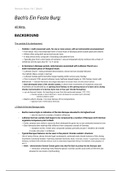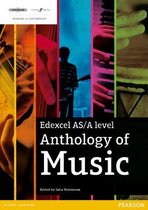Study guide
Bach
- Vak
- Instelling
- Boek
Includes a detailed summary of the information needed for A2 exam. Background, Key points of interest, Structure, Melody, Tonality, Harmony, Texture, Sonority, Rhythm & Metre. (FYI Secured B Grade with these notes)
[Meer zien]




